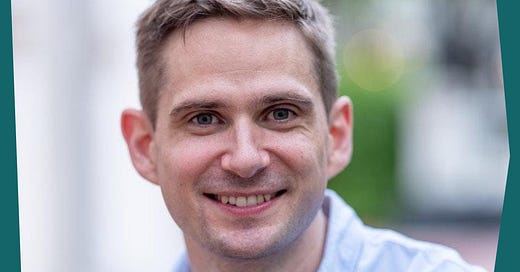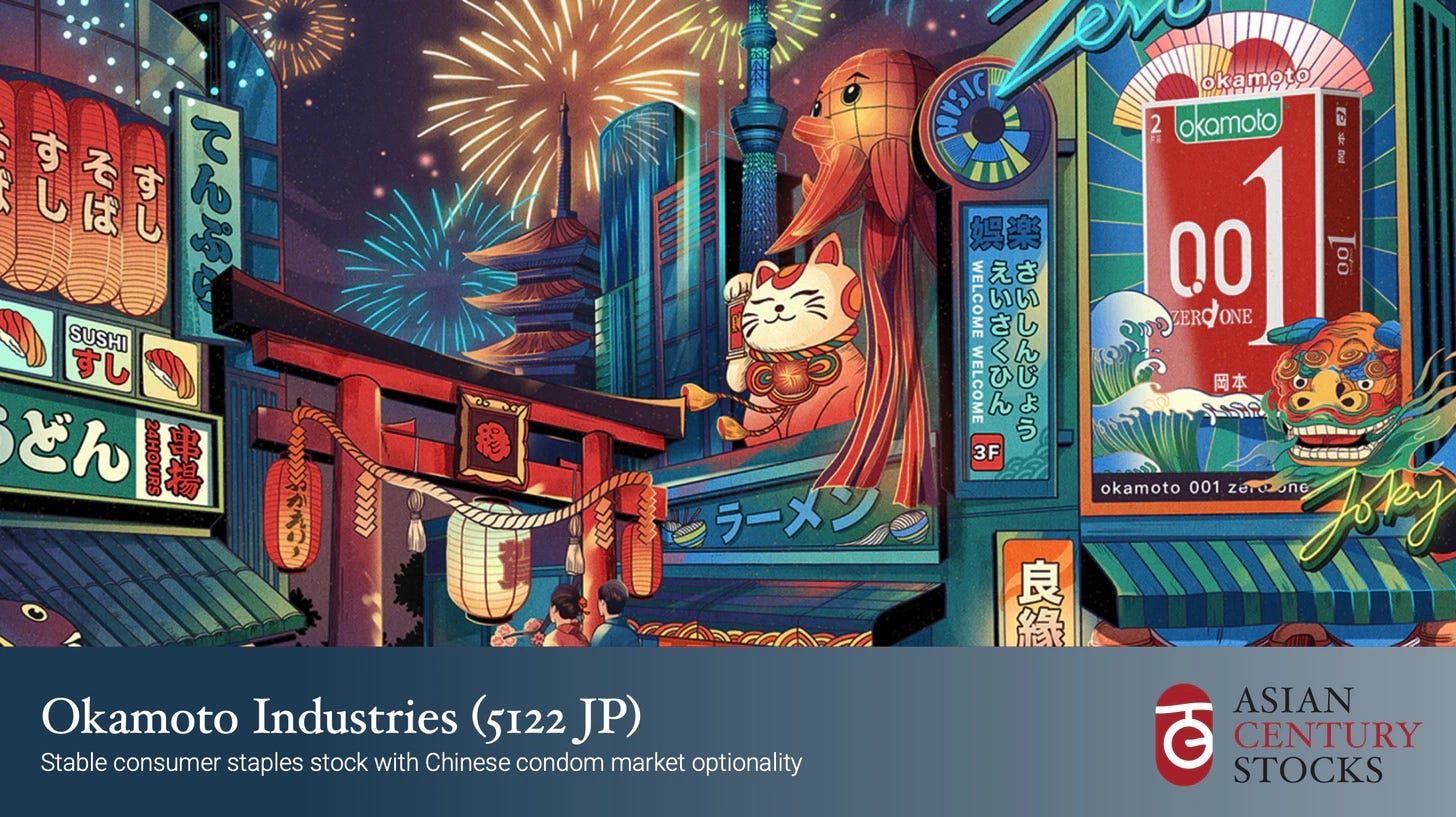This is the continuation of our Grow interview series, designed to share the nuts and bolts of how writers have gone independent and grown their audiences on Substack.
We invited Michael Fritzell, the author of Asian Century Stocks—a weekly publication that provides research on stocks in the Asia-Pacific region—to discuss his insights on how he converts free readers to paying subscribers, and his thoughtful approach to content strategy. Before coming to Substack, Michael worked researching investments in East and Southeast Asia. He now writes full-time.
This interview has been lightly edited for length and clarity.
What’s your Substack about in one sentence?
Investor education on stocks in the Asia-Pacific region.
What do you offer readers?
Investing in emerging markets is risky. In my view, investors need someone with experience who can guide them through that process. Asian Century Stocks is there to fill that void.
Readers get to learn about stocks they wouldn’t read about elsewhere. I provide them with background information about the company’s histories, management teams, product portfolios, and such. I also give them context about competitive dynamics and how they’re affected by broad industry trends.
Growth by numbers
Started Substack: November 2020
Offered paid subscriptions: April 2021
Total subscribers: 5,235
Paid subscribers: 278. “That number includes subscriptions that I’ve given to journalists for free in the hope that they will provide media coverage for my Substack. The net number of actually paying subscribers is 252.”
How did you start your Substack publication?
I started a blog called “Asian Century Stocks” on WordPress in September 2020. I set up the blog because I wanted to test the market—I wanted to see whether there was any interest in a blog on Asian value stocks. Six months later, I’d managed to accumulate 100 email addresses.
In November 2020, I moved to Substack to see if the platform would be superior to WordPress. I started out by sharing links, then providing commentary and deeper analysis. It became successful, with over 400 emails, within the first half-year.
Six months later, I quit my job to focus entirely on my Substack: I moved all the WordPress blog posts to Substack and hired a design firm in Singapore to create some new branding, and it relaunched in April 2021.
I quit my job to focus entirely on my Substack.
Why did you publish on Substack?
I was fed up with my old job, frankly. At the time, I was researching high-flying tech stocks such as Meituan and NIO—stocks that I didn’t care for and didn’t believe in. I felt that it would be meaningful to have, say, 300 or 500 clients across the world who shared my views about how to think about stocks.
I also felt there was a problem to be addressed. Many investors buy stocks blindly, without much thought going into it. While regulation prevents me from providing outright buy recommendations, I can at least point out the strengths and weaknesses of individual companies. I arm investors with knowledge about what they’re getting themselves into.
And there was a lot of uncertainty about the potential size of the market. I knew that investors were interested in Chinese tech stocks such as Alibaba. But would they be interested in Indonesian chocolate producer Delfi or Korean furniture store Hanssem? I had to take a leap of faith.


What’s your content strategy?
I publish 2-3 times per week. One summary post sent out each Monday morning (“Monday morning links”) plus at least another post with more in-depth content.
I spend 1-2 days doing background research before even starting to write. If a post doesn’t require background research, I can usually finish it within a single day. In that case, I might write three posts for that week.
My publishing cadence is inspired by Edwin Dorsey’s The Bear Cave newsletter. I felt I was taking a significant risk quitting my job, so I wanted to de-risk the whole venture by copying an approach proven to work. Every Monday morning, I send out a free newsletter with links related to Asian equities. I then send out 1-2 other posts per week with paywalled content. These posts are typically about companies that I hope readers will be interested in.
I send out emails on a fixed schedule because I hope that my Substack becomes part of readers’ weekly routines, increasing the chance that they will open them immediately instead of becoming unread “psychological liabilities” in their inboxes. I send out my free newsletter post every Monday at 12 p.m. sharp Singapore time. I usually send out paywalled content on Sunday mornings around 10 a.m. I think readers are often too busy to read 10-to-15-minute articles on weekdays. It’s better to leave such posts for the weekend.
I remind people that they’re missing out on paywalled content. Every Monday morning, I will get a few new paid subscribers who wish to gain access to the posts I’ve written over the preceding week. I also try to ensure that the free newsletter sent out each Monday offers enough value for investors to stay on the list. I then try to convert them to paid subscribers, slowly but steadily.
What reminders do you use to let readers know they can subscribe for more paid content?
My philosophy is that I should provide value first. Only after I’ve demonstrated value to readers do I ask for something back (a subscription).
That means that I only put call-to-action buttons at the bottom of my free posts. Right above those buttons, I emphasize the benefits of going paid.
I try to express joy and gratitude in my communication with readers. I try to avoid making readers feel guilty for not subscribing because that will provide them with negative energy. Readers don’t owe me anything.
I’ve tried other methods, such as teaser emails with paywalls halfway down the post. But I’m skeptical about them. While they do lead to conversions, some readers get annoyed by them. I’m all about creating customer goodwill for the long-term—about building a brand. I want my Substack to contain as little friction as humanly possible.
I’m all about creating customer goodwill for the long-term—about building a brand. I want my Substack to contain as little friction as humanly possible.
What has been a meaningful moment for the growth of your publication?
The most conversion I had from any single post was my free post on Japanese condom maker Okamoto. I received eight new paid subscribers in the 24 hours following the release of this report, which I think is an excellent result.
I think it was a solid piece of research, with a 45-page PowerPoint presentation detailing more or less everything you needed to know about the company. I was lucky that one of Okamoto’s major shareholders was a subscriber to Asian Century Stocks, and he helped answer a lot of questions that popped up during my research process.
It might also have helped that many readers were already familiar with the Okamoto brand name. Familiarity breeds trust.
The call-to-action button at the bottom of the post had the title “Join now” instead of the usual “Subscribe now” that you’ll see on most Substacks. I suspect that readers are more inclined to click a button that emphasizes the benefit of joining a community of investors. I used a custom button linked to my Substack’s subscribe page to create a button with this unique wording.
I also ended my 45-page PowerPoint presentation with a call-to-action slide titled “Subscribe for a steady stream of new ideas.”
What is the sharpest piece of advice you can offer other writers about growing a Substack publication?
Think about what value you provide to the reader. Such value might include:
Empowering them to solve problems in their lives and achieve their goals
Making them feel smarter
Providing them with a sense of community
Beautiful prose that they enjoy reading
The second advice is to go for a narrow—but global—niche. One of the quotes in the book The Almanack of Naval Ravikant has stuck with me:
"Become the best in the world at what you do. Keep redefining what you do until this is true."
The newsletter industry is competitive. The only way to avoid cutthroat competition is to carve out a niche. The addressable market doesn’t have to be massive. Many Substack authors can break even with just a few hundred subscribers.
What advice have you received about growing your publication that didn’t prove to be helpful?
Many people have advised me to write about what the mainstream audience wants to see. For example, provide information on popular stocks like Alibaba and Tencent. I tried that approach a few times. That was a terrible idea.
First, it diluted the brand name of Asian Century Stocks, which had become associated with value stocks. Second, popular stocks tend to perform poorly after short-term investors inevitably lose interest.
I now think it’s better to carve out a niche for yourself and stick to it. Most people won’t be interested in your Substack, and that’s okay. At least you’ll have loyal customers in a niche that you—and nobody else—dominates.
Top three takeaways
Study the greats. De-risk the leap to writing full time: deep research into other successful Substack publications can be helpful.
Create concrete value for your readers.
Carve out a narrow—but global—niche. The only way to avoid competition is to carve out a niche.
Who is another Substack writer you’ve turned to for guidance?
Edwin Dorsey is the one person that has provided the most inspiration. I’ve watched Substack’s interview with Edwin on YouTube many times. Don’t let his age fool you - he’s a marketing genius.
The set-up I’ve used with a weekly free newsletter to get people to subscribe to the free list came from Edwin. I’ve also used some of his other tricks, including 1) creating a buzz about an upcoming idea, 2) providing free subscriptions to journalists and influencers, and 3) always emphasizing the benefits of becoming a paid subscriber.
What questions do you have for Michael that we didn’t ask? Leave them in the comments!
To read more from this series on growing your publication, see our interviews with Glenn Loury, Erik Hoel, Jessica DeFino, Mike Sowden, Elizabeth Held, Jonathan Nunn, Polina Pompliano, Michael Williams, Judd Legum, and Caroline Chambers.












Share this post